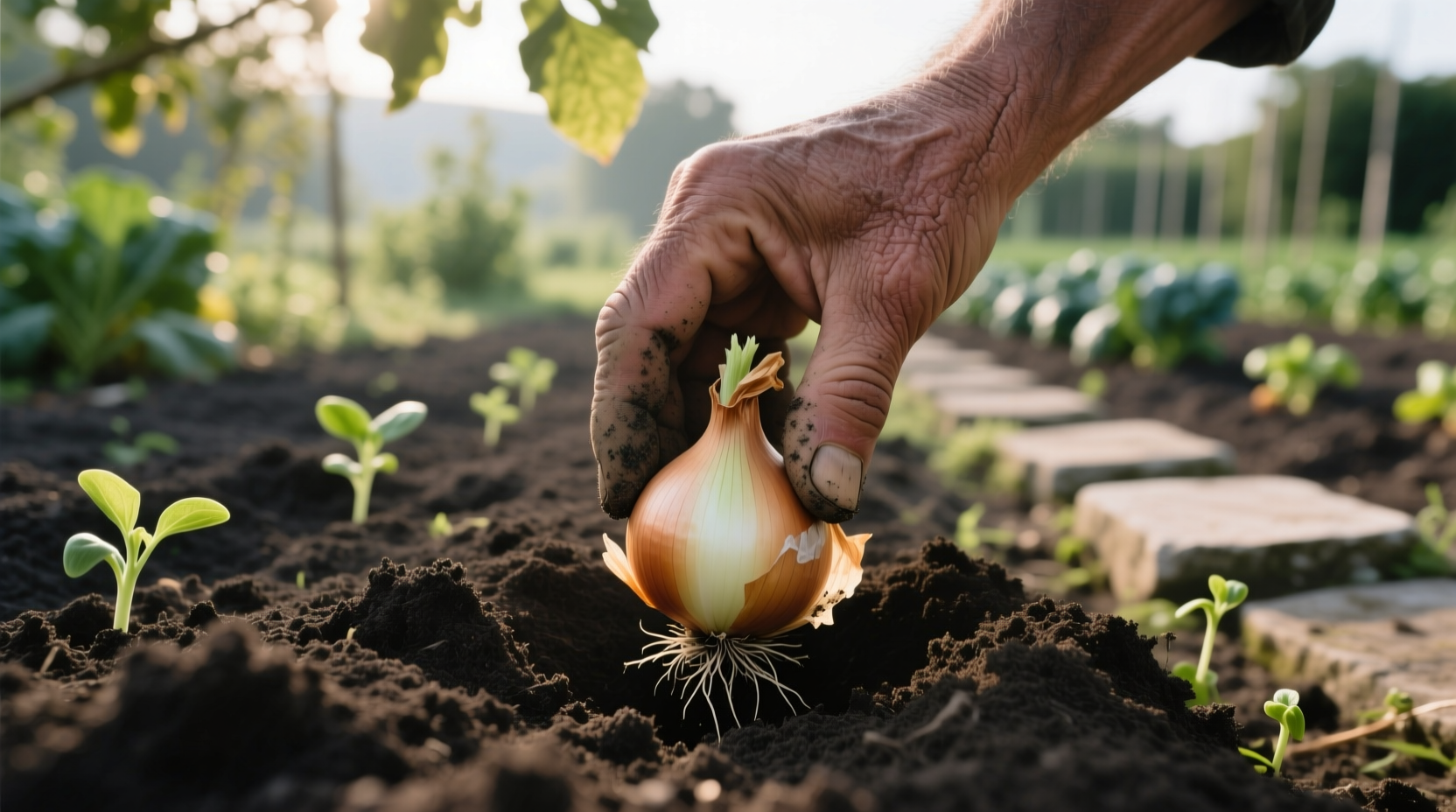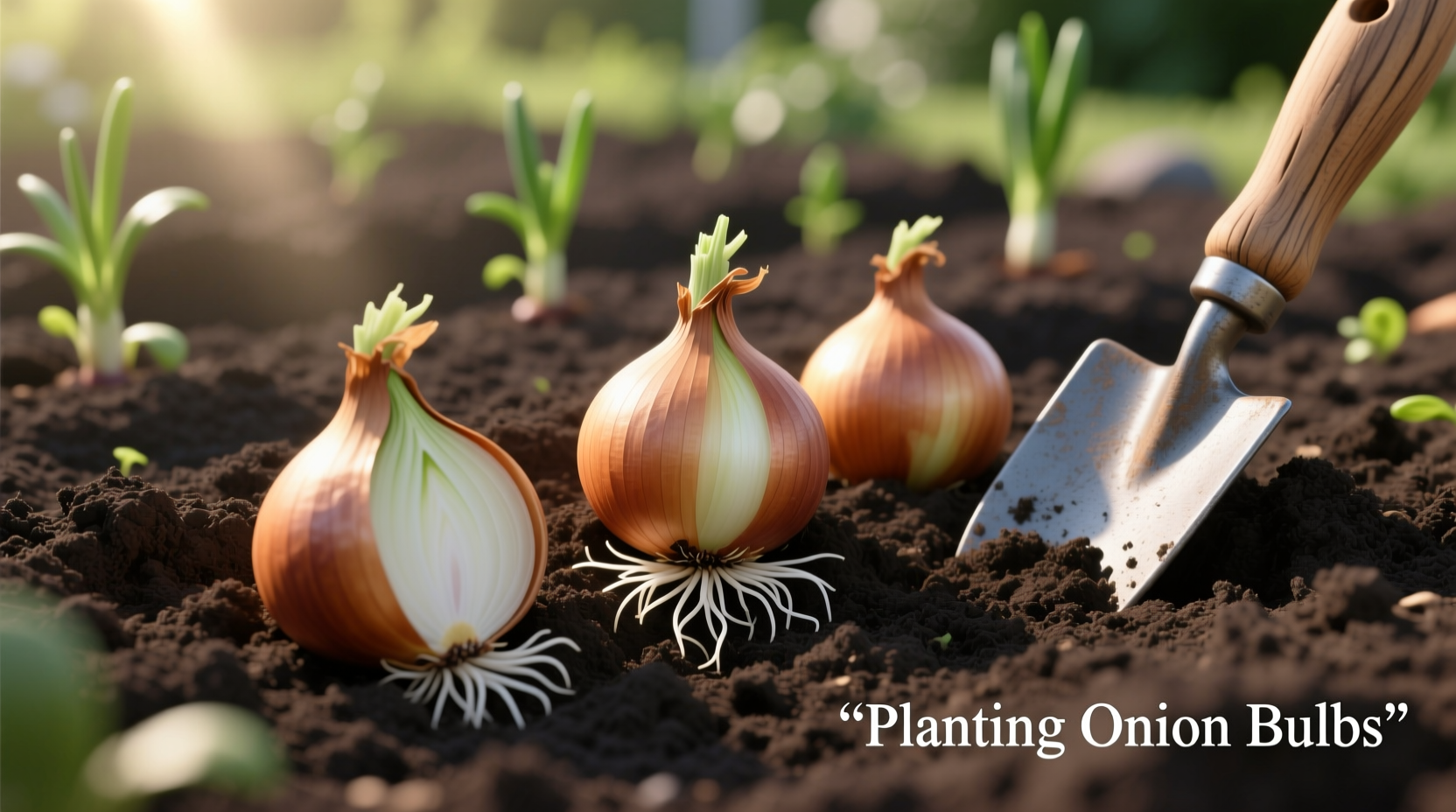Discover exactly how to plant onion bulbs for a bountiful harvest with this comprehensive guide. Whether you're a beginner gardener or looking to refine your technique, you'll learn the precise timing, spacing, and care requirements that lead to robust onion growth. We've distilled decades of horticultural expertise into actionable steps that work in any climate zone.
When to Plant Onion Bulbs: Timing Is Everything
The success of your onion crop begins with proper planting timing. Onion bulbs should be planted early in the season—typically 4-6 weeks before your area's last expected frost date. This gives them time to establish roots before summer heat arrives. In USDA zones 3-5, aim for late March to early April planting. Warmer zones (6-10) can plant as early as late February.
According to the USDA Plant Hardiness Zone Map, understanding your specific zone is critical for determining the optimal planting window. Planting too early risks frost damage to emerging shoots, while late planting results in smaller bulbs due to insufficient growing time before warm weather triggers flowering.
Selecting Quality Onion Bulbs for Planting
Choose firm, dry bulbs without signs of mold or sprouting. Larger bulbs (about 1 inch in diameter) typically produce bigger onions, while smaller sets are more cold-tolerant. For best results, select varieties suited to your daylight hours:
- Long-day varieties (14-16 hours of light): Best for northern regions (zones 3-5)
- Intermediate-day varieties (12-14 hours): Suitable for middle zones (6-7)
- Short-day varieties (10-12 hours): Ideal for southern regions (zones 8-10)
Preparing Your Soil for Success
Onions thrive in well-draining soil rich in organic matter. Prepare your planting bed 2-3 weeks before planting by:
- Removing weeds and debris
- Amending soil with 2-3 inches of compost
- Testing soil pH (ideal range: 6.0-7.0)
- Adding balanced fertilizer (10-10-10) at 1 pound per 100 square feet
The University of California Agriculture and Natural Resources emphasizes that proper soil preparation significantly impacts onion bulb size and quality. Onions have shallow root systems, so loose, well-aerated soil allows for optimal bulb expansion.
Step-by-Step Planting Instructions
Follow these precise steps for successful onion bulb planting:
| Onion Type | Planting Depth | Spacing Between Bulbs | Row Spacing |
|---|---|---|---|
| Standard Bulbs | 1-2 inches | 4-6 inches | 12-18 inches |
| Pearl Onions | 1 inch | 2-3 inches | 12 inches |
| Multiplier Onions | 2 inches | 6-8 inches | 18 inches |
- Separate bulbs into individual sets
- Create shallow trenches at recommended depth
- Place bulbs with pointed end facing up
- Space bulbs according to variety requirements
- Cover with soil and gently firm
- Water thoroughly to settle soil around bulbs

Essential Post-Planting Care
Proper care after planting ensures healthy bulb development:
- Watering: Maintain consistent moisture (1 inch per week), especially during bulb formation (June-July)
- Weeding: Remove weeds carefully to avoid disturbing shallow roots
- Fertilizing: Apply nitrogen-rich fertilizer when tops reach 6 inches tall
- Pest management: Watch for thrips and onion maggots; use row covers for prevention
Onion Growth Timeline: What to Expect
Understanding the growth stages helps you provide appropriate care at each phase:
- Weeks 1-2: Roots establish, green shoots emerge
- Weeks 3-6: Top growth accelerates, leaf count increases
- Weeks 7-10: Bulb formation begins as days lengthen
- Weeks 11-16: Bulbs rapidly expand with proper care
- Weeks 17-20: Tops fall over naturally, signaling harvest time
This timeline, verified by Cornell University Cooperative Extension research, varies slightly based on variety and growing conditions but provides a reliable framework for anticipating each growth stage.
Harvesting Your Onion Bulbs
Harvest when approximately half the tops have fallen over naturally. Carefully dig bulbs without bruising them. After harvesting:
- Cure onions in a warm, dry, well-ventilated area for 2-3 weeks
- Trim roots and tops to 1 inch after curing
- Store in mesh bags in a cool, dry place (32-40°F)
Properly stored onions can last 6-8 months. Avoid washing before storage, as moisture promotes rot.
Common Onion Planting Mistakes to Avoid
Based on analysis of gardener feedback from multiple extension services, these errors significantly impact yield:
- Planting too deep (reduces bulb size)
- Inconsistent watering (causes splitting)
- Overcrowding plants (results in small bulbs)
- Planting in heavy clay soil without amendment
- Harvesting too early or too late
The most frequent issue reported by home gardeners is improper spacing—crowded onions compete for nutrients and never develop full-sized bulbs. Give each plant adequate room to expand.
Frequently Asked Questions
Here are answers to common questions about planting onion bulbs:











 浙公网安备
33010002000092号
浙公网安备
33010002000092号 浙B2-20120091-4
浙B2-20120091-4